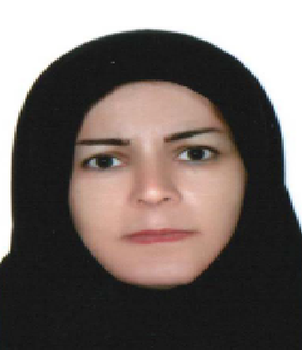Zoning and spatial analysis of the susceptibility of four environmental hazards: Landslide, Flood, Earthquake and Subsidence (Case study: 22 Districts of Tehran)
Author(s):
Article Type:
Research/Original Article (دارای رتبه معتبر)
Abstract:
Introduction
The natural behaviors of the human life environment where the settlements are constructed without recognizing and studying these behaviors are called hazards. The distinctive features of natural hazards are the changes in the hazard severity in different locations, as in the urban environments, human activities along with greater vulnerability in the environment, aggravate the hazard and the extent of its occurrence. The city and its infrastructure development in providing security and various needs of human are of the most substantial areas for the development of social life. In general, identifying areas prone to hazards is a key tool for decision makers to reduce the damages caused by natural hazards. On the other hand, abstract study of the nature’s behaviors in the form of flood, earthquake, land slide and subsidence has always made managerial decision-makings difficult, so that avoiding the aggravating factors of a hazard has caused to get close to another hazard.
Objectives
The main objective of this study is to evaluate areas affected by these four natural hazards in all 22 Districts of Tehran City. In other words, this research with the aim of comprehensive and integrated zoning of hazards such as flood, earthquake, landslide and subsidence has proceeded to identify, evaluate and adjust the findings in the form of a comprehensive map of the susceptibility of these behaviors under the title of four environmental hazards within the 22 districts of Tehran city.
Discussion
Multiple-risk analysis, including a range of data, provides a more realistic model of the natural environment management. In this regard, studies have been conducted on the various approaches to analyze spatial data, how to create a combination of environmental hazards and how to determine their risk and vulnerability levels. To generate a probabilistic model, the basic assumption is that the risk level is determined by risk factors and possible hazards in the future, and with an emphasis on the past events. In this study, the creating and effective factors in environmental crises are related and calculated with each other with respect to several risks.Research Methodology: One of the usual algebraic methods is the Analytic Hierarchy Process (AHP), which, as a weighted evaluation method, evaluates different scenarios and selects the best option by combining the qualitative and quantitative factors. The Analytic Hierarchy process as one of the multi-criteria decision-making methods provides the ground for performing applied spatial analyses by examining the effects of different factors in contradiction with each other. The research method is quantitative-analytical, and all the factors affecting the occurrence of each hazard have been identified and digitized in ArcGIS environment and modeled using Frequency Ratio (FR) model. Then, each of the four susceptibility maps was combined in fuzzy method and the final susceptibility map was classified into 5 classes of very high, high, moderate, low and very low susceptibility, and was extracted and presented as a map and a table.
Results
This research resulted in the production of the susceptibility zone map for more probable hazards including flood, earthquake, landslide, and subsidence of Tehran City in the separation of 22 Districts. This map includes several factors such as slope degree, slope direction, slope shape, elevation layers, distance from the river, distance from the road, distance from the fault, geology, land use, and the rain The result show that the effective factors in flood are the distance from the river, and the slope; the most effective factors in the destruction are the wasting of groundwater and eliminating the geotechnical properties of the soil; the most effective factors in the occurrence of earthquake are the distance from the major and minor faults which determine the length of major and minor faults. Based on the results of this research and their analyses in Tehran’s districts, areas with very high, high, moderate, low and very low susceptibility were observed. Then, considering this study, their percentages were calculated in each class and reported in the form of a table. Among the 22 districts of Tehran city, districts 1, 3, 18, 5, and 4 are more susceptible than the rest of districts and districts 9, 10, 11, 12, and 17 are less susceptible in terms of the four aforementioned hazards. Therefore, it is recommended that the process of reinforcement and standardization of existing facilities and infrastructure to be implemented by prioritizing hazardous zones. Concerning the construction and development of new infrastructure and facilities, the occurrence and exacerbation of these natural hazards within the hazardous areas may be prevented by imposing restriction or not issuing construction permits.
Keywords:
Language:
Persian
Published:
Journal of of Geographical Data (SEPEHR), Volume:27 Issue: 108, 2019
Pages:
77 to 89
magiran.com/p1943205
دانلود و مطالعه متن این مقاله با یکی از روشهای زیر امکان پذیر است:
اشتراک شخصی
با عضویت و پرداخت آنلاین حق اشتراک یکساله به مبلغ 1,390,000ريال میتوانید 70 عنوان مطلب دانلود کنید!
اشتراک سازمانی
به کتابخانه دانشگاه یا محل کار خود پیشنهاد کنید تا اشتراک سازمانی این پایگاه را برای دسترسی نامحدود همه کاربران به متن مطالب تهیه نمایند!
توجه!
- حق عضویت دریافتی صرف حمایت از نشریات عضو و نگهداری، تکمیل و توسعه مگیران میشود.
- پرداخت حق اشتراک و دانلود مقالات اجازه بازنشر آن در سایر رسانههای چاپی و دیجیتال را به کاربر نمیدهد.
In order to view content subscription is required
Personal subscription
Subscribe magiran.com for 70 € euros via PayPal and download 70 articles during a year.
Organization subscription
Please contact us to subscribe your university or library for unlimited access!


